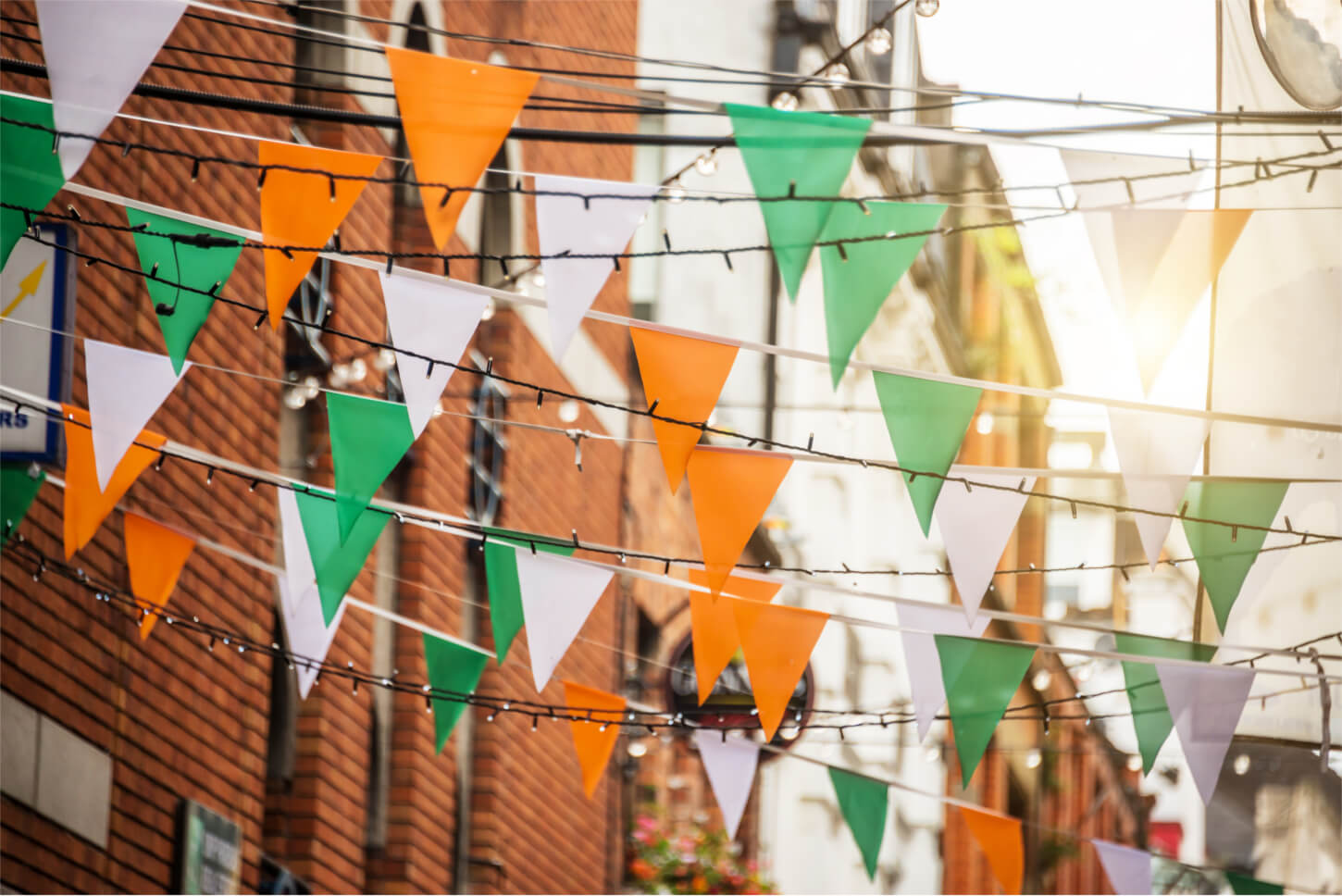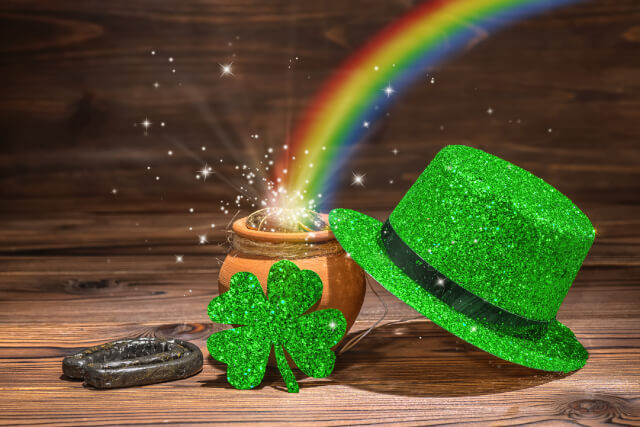The 6 Facts about St George’s Day You Might Not Know
St. George is one of the most revered saints in history and is, of course, the patron saint of...

Every year on the 17th of March, the world illuminates green to honour St. Patrick. But how much do you really know about Ireland’s patron saint? We have uncovered some facts about St. Patrick that you may find surprising!
On St. Patrick’s Day, towns and cities from Belfast to Buenos Aires are awash with every shade of green and the consumption of Guinness increases to 13 million pints. It’s the day when millions of people embrace their Irish heritage, yet so little is discussed about the man himself!
In honour of St. Patrick’s Day, here are 10 surprising St. Patrick facts that you probably didn’t know…

As we uncovered in our weird and wonderful facts about Ireland, St. Patrick wasn’t actually Irish!
This fact about St. Patrick may come as a surprise, as when St. Patrick’s Day rolls around each year, we all like to claim to be a bit Irish!
It is said that the beloved patron saint of Ireland was born to Roman parents in Britain during the second half of the 4th century. Many believe that he was named Maewyn Succat and was born in the village of Bannaventa, Scotland, whilst others insist that he was Welsh.
In the early 5th century, St. Patrick first arrived in Ireland in the hold of a slave ship. Irish Marauder Niall of the Nine Hostages took the boy from his family estate and sold him as a slave to the druid landowner Meliuc in County Antrim.
For six years, Patrick lived in complete isolation with his only companion being his flock of sheep. It was during this time of desolation Patrick’s newfound faith blossomed. In his autobiography, the patron saint wrote that an angel appeared to him in a dream and told him of a ship leaving Ireland.
The young slave escaped and walked over 200-miles before arriving at a port and boarded the cargo ship back to the UK. Afterwards, he spent 15 years undertaking strict religious study in Gaul, now modern-day France.
Maewyn Succat was renamed ‘Patricius’ or ‘Patrick’ (meaning father or nobleman) by Pope Celestine I at the end of his training. St. Patrick then embarked on his missionary duties in Ireland.
Throughout this time, St Patrick was incarcerated, beaten and attacked while attempting to spread his message. Towards the end of his career, it appeared that he had become much more popular, having founded a number of churches and schools under the Christian faith.

Across Ireland, several locations have been associated with St. Patrick.
From the Rock of Cashel in Country Tipperary to Croagh Patrick in County Mayo, it is clear how far he was willing to travel to fulfil his missionary duties.
Those visiting Ireland can walk the St Patrick’s Trail in Northern Ireland. Upon this path, you will discover Armagh’s two impressive cathedrals that are dedicated to the patron saint, as well as the St Patrick Centre in County Down and Saul Church.

Our next fact about St. Patrick is actually a myth!
Tradition says that the reason why there are no snakes in Ireland is down to St. Patrick. It is commonly told that St. Patrick banished all of the snakes from Ireland, purportedly chasing the reptiles into the sea.
While it is an interesting story, there is no scientific evidence that snakes were ever native to Ireland. In fact, Ireland is one of only a handful of places worldwide where snakes cannot be found. Other countries include New Zealand, Iceland, Greenland, and Antarctica.
Whilst St. Patrick was credited with bringing Christianity to parts of Ireland, this is also a myth!
Christianity was already introduced to Ireland thanks to the attempts of previous members of the Christian Church. It was also done by Irish merchants who had travelled to British shores and come into contact with the religion, taking it back to their homeland.

Another fact about St. Patrick that you may find surprising is that the first St. Patrick’s Day celebration was not held in Ireland.
The first St. Patrick’s Day celebration was in Boston in 1737 when Irish immigrants began recognising the sacred day. This was followed by an official parade in New York in 1766.
Ireland was further behind in the celebrations, with the first parade held in Waterford in 1903 and then Dublin in 1931.
Our next surprising St. Patrick fact is that the saint himself didn’t wear green!
Historians claim that his colour was a light shade of blue, which can still be seen on ancient Irish flags and armbands of the Irish Citizen Army.
The practice of wearing green began during the Irish independence movement when the clover became a symbol of nationalism.

The belief in the red-haired, green-clothed Leprechaun relates to a mystical type of fairy, who use their powers for good or evil.
The legend of the leprechaun is commonly associated with St. Patrick’s Day, when we all wear green to honour St Patrick. According to folklore, wearing green on St. Patrick’s Day makes you invisible to the evil leprechauns, who pinched anyone they can see!
Whilst this St. Patrick’s Day fact may sound like a myth, don’t take chances, wear green on the 17th of March!

While trying to convert the Irish into Christians, St. Patrick used shamrock in his religious teachings. He used the clover as a metaphor to explain the holy trinity, representing the Father, Son and Holy Spirit.
However, the shamrock was also already a sacred plant in Ireland as it symbolised the arrival of spring. It is also said that the three leaves of the shamrock stand for faith, hope and love. A fourth leaf is widely considered a symbol of good luck! They are rare and not found in the same abundance as the three leaves, and therefore considered lucky!
Did you find our St. Patrick’s Day facts interesting? Take a look at our facts about St David’s Day and our facts about St George to learn even more about the patron saints. If you are hoping to celebrate St. Patrick’s Day on the Emerald Isle, take a look at our hand-picked selection of cottages in Ireland and our free travel guide for more inspiration on what to do.
Are you on the phone to our call centre? Your Customer ID is:
Get involved in the Discussion